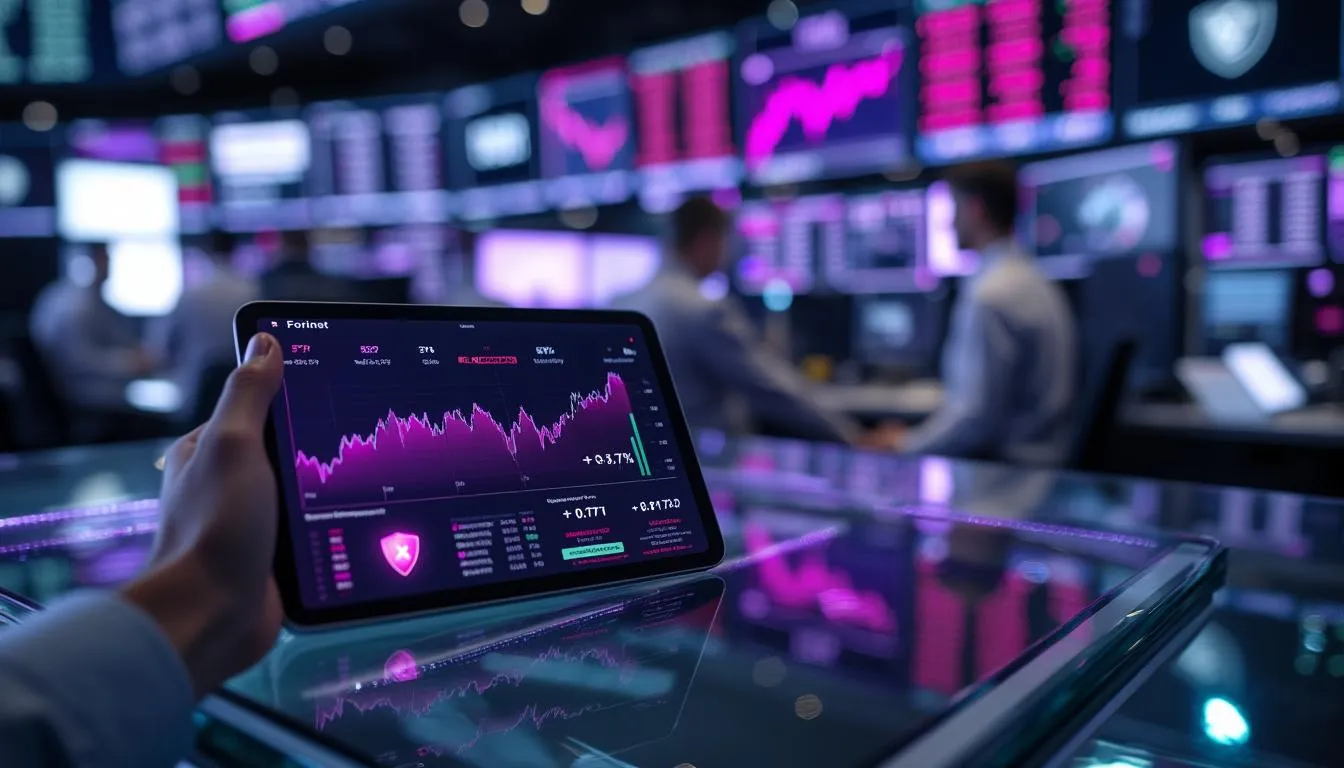The Quiet Surge: Fortinet’s Latest Moves in a Shifting Security Landscape
In the ever-volatile world of cybersecurity, few names command as much respect as Fortinet, Inc. (FTNT). As a pioneer in integrated security solutions, Fortinet has distinguished itself through relentless innovation and a broad portfolio, serving enterprises, service providers, and government organizations globally. Amidst a sector oscillating between optimism and caution, Fortinet’s ability to eke out gains—even on relatively muted sessions—signals resilience and underlying strength.
Today, as most tech peers tread water or slip back, Fortinet’s modest climb stands out. This sustained momentum, underpinned by strategic product enhancements and a robust long-term thesis, positions the company at the vanguard of a sector where the stakes—and scrutiny—have never been higher.
Key Takeaways
Session Gain: FTNT up 0.77% to $79.12; outpacing both sector and market benchmarks during a flat-to-down session.
Volume Profile: Early session volume of 208,238, above its recent trend, hinting at renewed institutional engagement.
Product Innovation: Recent launch of CTEM-powered FortiRecon shows continued investment in AI and threat defense automation (Zacks).
Market Reaction: Some analysts defending the long-term thesis despite recent volatility, citing strong management and the shift to high-margin services (Seeking Alpha).
Investor Visibility: Upcoming participation in a Goldman Sachs fireside chat offers a platform to clarify strategy and address investor concerns (GlobeNewsWire).
Examining Fortinet’s Market Footing: Performance in Context
A Measured Gain Amid Sector Uncertainty
On a trading day marked by hesitation across large-cap tech, Fortinet’s 0.77% rise to $79.12 may seem modest, but it gains significance given the sector’s recent volatility. Trading volumes (208,238 shares in early session) signal that, far from being a technical blip, this move has the attention of active market participants. The current price edges above the previous close ($79.11), confirming a subtle but noteworthy positive bias.
Under the Hood: Historical Price Trends
In the context of the past quarter, Fortinet’s price action has been anything but linear. After a sharp correction triggered by macro headwinds and margin fears, the stock has stabilized. The latest session’s advance—though minor in absolute terms—demonstrates an emerging pattern of higher lows, suggesting accumulation by sophisticated investors who see value in Fortinet’s pivot toward recurring, service-based revenue streams.
Analyst and Market Sentiment: Parsing the Narrative
Defending the Bullish Thesis
Several influential voices are stepping up to defend Fortinet’s long-term outlook. A recent Seeking Alpha analysis argues that the market’s reaction to slower product segment growth is overdone:
"Fortinet's stock drop is excessive; strong management, scalable products, and SASE growth support my long-term bullish thesis... hardware is just an enabler for high-margin services, which remain the core value driver."
This perspective underscores a key narrative shift: while hardware sales may fluctuate with enterprise capex cycles, Fortinet’s services—especially in Secure Access Service Edge (SASE) and threat detection—are less cyclical and command premium margins.
Recent Developments and Investor Communication
Fortinet’s leadership is taking a proactive approach to investor relations. CEO Ken Xie and CFO Christiane Ohlgart are scheduled to appear at a Goldman Sachs-hosted fireside chat, a move likely designed to address both near-term concerns (margin compression, product growth) and reinforce the company’s strategic vision.
Meanwhile, the upgrade of FortiRecon with CTEM (Continuous Threat Exposure Management) demonstrates Fortinet’s commitment to staying ahead in an arms race where automation and AI are quickly becoming table stakes. As noted by Zacks:
"FTNT enhances FortiRecon with CTEM alignment, brand protection and AI-driven automation to tackle evolving cyber threats."
Why Cybersecurity Remains a Defensive Play
The cybersecurity sector remains one of the most mission-critical in today’s digital economy. With enterprise and government budgets increasingly prioritizing threat detection, automation, and zero-trust architectures, the market for Fortinet’s solutions is expanding—even as spending patterns become more selective.
Recent news highlights how the company is leveraging AI and automation not just to keep pace, but to set the agenda. The integration of CTEM into FortiRecon is more than a product tweak—it’s a signal that Fortinet is doubling down on proactive, continuous security assessment, a must-have in a world of constantly morphing threats.
The sector’s recent volatility also owes much to macroeconomic noise (interest rates, global IT spending), but Fortinet’s strategic bets—leaning into managed services and recurring revenues—insulate it, to some extent, from the hardware order cycles that have rattled less diversified peers.
Conclusion: Fortinet as a Sector Standout
In an environment where most tech stocks are struggling to stay afloat, Fortinet’s ability to post a positive session—and do so on higher volume—marks it as a name to watch. The company’s continued product innovation, savvy communication strategy, and focus on high-margin, recurring revenue streams place it at the leading edge of the cybersecurity sector.
For investors seeking exposure to a defensive growth play with proven management and a forward-thinking product suite, Fortinet’s current trajectory offers compelling evidence that the market may be underestimating its staying power. As the sector recalibrates around automation, AI, and managed services, Fortinet is quietly but confidently establishing itself as the benchmark for resilience and innovation.

.svg)
.svg)
.svg)
.svg)

.svg)

.svg)
















